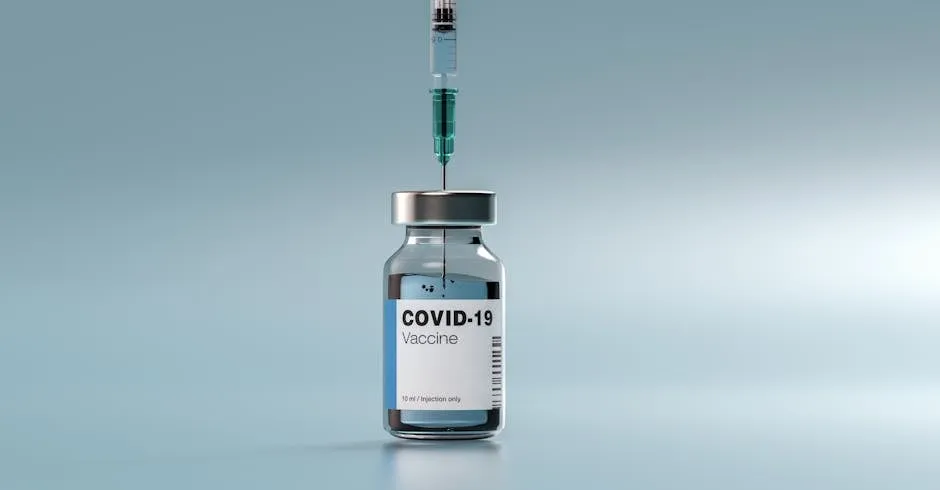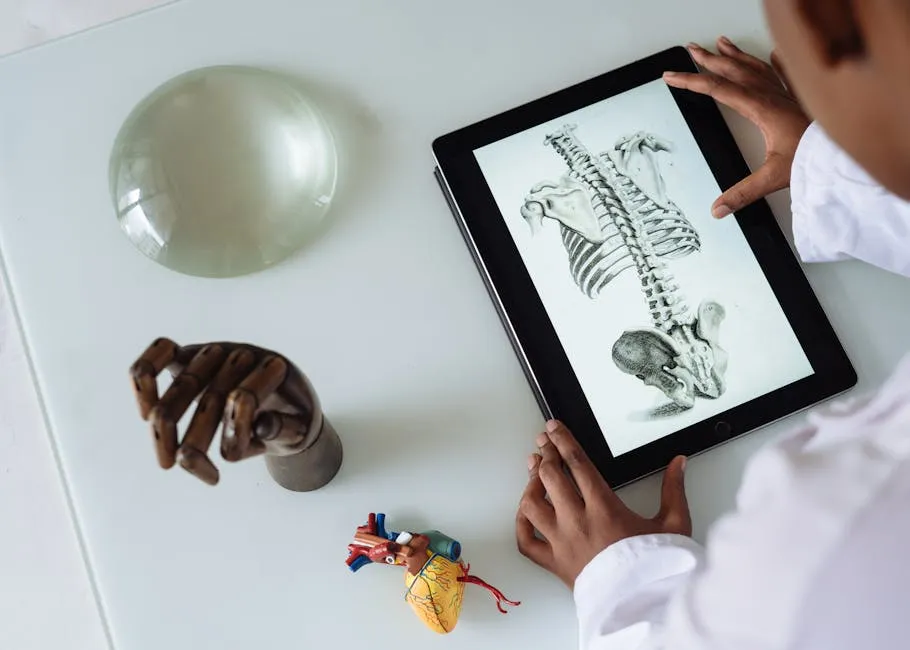Introduction
Statistics is the unsung hero of biopharmaceutical research. It’s the secret sauce that transforms chaotic data into clear conclusions. Imagine trying to navigate a maze without a map. That’s what drug development looks like without statistics—confusing and often frustrating. In today’s world, biopharmaceutical research is becoming increasingly intricate. New technologies and methodologies are sprouting up like weeds in spring. As a result, researchers must embrace statistical methodologies to make sense of the data deluge. From clinical trials to regulatory submissions, statistics provide a framework for making informed decisions, ensuring safety and efficacy. If you’re looking to enhance your analytical skills, consider diving into Statistical Analysis Tools that can help streamline your processes. This article will cover key areas where statistics play a vital role in biopharmaceutical research. We will look at various statistical methods, their applications in drug development, and emerging trends shaping the future of this field. By the end, you’ll understand why statistics are not just numbers—they’re the backbone of successful drug development.
The Importance of Statistics in Biopharmaceutical Research
Overview of Biopharmaceutical Research
Biopharmaceutical research focuses on developing drugs using biological sources. This can include everything from proteins to nucleic acids. The primary objective? To create effective therapies that improve patient health. Over the years, this field has evolved significantly. Once upon a time, researchers relied heavily on trial and error. Today, sophisticated statistical methods guide every step of the process. From early-stage drug discovery to late-phase clinical trials, statistics help streamline decision-making and validate results. If you’re keen on understanding the intricacies of this evolution, check out Clinical Trials: A Practical Guide to Design and Implementation. The reliance on statistical methods has never been more critical. As the complexity of treatments increases, so does the need for robust analytical techniques. Researchers must now navigate a labyrinth of data, ensuring that every piece is accounted for and analyzed properly. This is where statistics truly shine. They offer a structure for testing hypotheses, analyzing trends, and interpreting results. In short, they help researchers tell the story hidden within the numbers. As we continue to push the boundaries of what’s possible in biopharmaceuticals, a solid understanding of statistics will be indispensable. Whether it’s determining sample sizes for trials or analyzing the effectiveness of new therapies, statistics are at the heart of it all. The journey from lab to market is paved with data, and statistics ensure that this journey is both efficient and effective. For a deeper dive into statistical methods, The Art of Statistics: Learning from Data is a fantastic resource.
Role of Statistics in Drug Development
Statistics play a pivotal role in every phase of drug development. From the initial discovery to the final regulatory approvals, statistics ensure that researchers make informed decisions. During the discovery phase, statistics help identify potential drug candidates. Researchers analyze biological data to pinpoint compounds that show promise. For instance, statistical models can highlight correlations between drug structures and their biological activities. This guidance is invaluable for choosing which compounds to develop further. If you’re interested in honing your data analysis skills, consider R for Data Science: Import, Tidy, Transform, Visualize, and Model Data. In the preclinical stage, statistics are equally important. Here, researchers conduct experiments to test their compounds on animal models. Statistical analyses help in determining the safety and efficacy of these drugs. By comparing treated and untreated groups, researchers can quantify the effects of the drug. Clinical trials represent the most statistically intense phase of drug development. Here, statistics ensure that trials are designed scientifically. Randomization, blinding, and sample size calculations all hinge on statistical principles. For example, suppose a new drug is being tested against a placebo. Statistical analyses help determine if any observed differences in outcomes are due to the drug rather than chance. To dive deeper into this topic, consider Biostatistics: A Foundation for Analysis in the Health Sciences. Regulatory agencies, such as the FDA, heavily rely on statistical analyses to make decisions. They assess the results from clinical trials to ensure that a drug is both safe and effective. For instance, if a trial shows a statistically significant improvement in patient outcomes compared to a placebo, it increases the chance of regulatory approval. In summary, statistics are not just numbers; they are the backbone of drug development. They guide decisions, ensure safety, and help bring effective therapies to market.
Key Statistical Methodologies in Biopharmaceutical Research
Descriptive Statistics
Descriptive statistics summarize and describe the main features of a dataset. They provide simple summaries about the sample and the measures. This type of statistic is crucial in biopharmaceutical research as it helps researchers understand the basic characteristics of their data. If you’re interested in practical applications, check out Practical Statistics for Data Scientists: 50 Essential Concepts. Common descriptive statistics include measures of central tendency like mean, median, and mode. The mean is the average of a dataset, helping to identify the overall trend. The median, on the other hand, represents the middle value when the data is ordered, offering insight when data is skewed. The mode indicates the most frequently occurring value in a dataset, which can be particularly useful in understanding patient responses in clinical trials. Another essential descriptive statistic is the standard deviation. This measure indicates the amount of variation or dispersion in a set of values. In biopharmaceutical studies, a low standard deviation means that the data points tend to be close to the mean, suggesting consistent results. Conversely, a high standard deviation indicates variability, which can be critical when assessing treatment effects. For example, in a clinical trial assessing a new medication, researchers may report the mean reduction in symptoms along with the standard deviation. This information provides a clearer picture of how effective the drug is and how patients might respond differently. If you’re keen on learning more about the statistical principles behind this, consider The Elements of Statistical Learning: Data Mining, Inference, and Prediction.
Descriptive statistics are essential in biopharmaceutical research as they help summarize and describe data characteristics. descriptive statistics in manufacturing plant
Inferential Statistics
Inferential statistics extends beyond mere data description. It allows researchers to make conclusions and predictions about a population based on sample data. This is especially important in hypothesis testing, where researchers aim to determine if there is enough evidence to support a specific claim about a drug’s efficacy or safety. Key techniques in inferential statistics include t-tests, chi-square tests, and ANOVA. A t-test is often used to compare the means of two groups, such as a treatment group versus a control group. This can help researchers determine if a drug produces significantly different outcomes than a placebo. For a comprehensive understanding of these methods, don’t miss The Data Science Handbook. The chi-square test is used for categorical data to assess how likely it is that an observed distribution is due to chance. For instance, researchers may use this test to compare the number of patients who experience side effects in two different treatment groups. ANOVA, or Analysis of Variance, is employed when comparing three or more groups. It helps researchers ascertain if at least one group mean is statistically different from the others. This is particularly useful in trials testing multiple dosages of a drug. In clinical trials, applying these techniques allows researchers to draw meaningful conclusions. For example, if a t-test shows a significant difference in symptom improvement between a drug group and a placebo group, it provides strong evidence of the drug’s effectiveness.
Inferential statistics empower researchers to make informed decisions based on their data. the problem with inferential statistics
Regression Analysis
Overview: Regression analysis is a statistical technique that assesses the relationships between variables. It helps researchers understand how changes in one variable can affect another. In biopharmaceutical research, this understanding is crucial for predicting outcomes and making informed decisions about drug efficacy and safety. Types: There are several types of regression analysis vital for biopharmaceutical studies. Linear regression examines the relationship between two continuous variables, helping predict outcomes. Logistic regression, on the other hand, is used when the outcome is binary, such as success or failure of a treatment. Survival analysis focuses on time-to-event data, essential for understanding patient survival rates and treatment effectiveness over time. If you’re interested in a deeper understanding of these methods, consider Applied Multivariate Statistical Analysis. Case Study: A notable example of regression analysis in action comes from a clinical trial evaluating a new cancer therapy. Researchers employed logistic regression to analyze patient response rates based on various factors, such as age, genetic markers, and previous treatments. The results revealed that specific genetic markers significantly predicted treatment success, guiding personalized treatment plans for future patients. This case illustrates the power of regression analysis in tailoring therapies to individual patient needs.
Bayesian Statistics
Definition: Bayesian statistics is a statistical paradigm that uses probability distributions to represent uncertainty about parameters. It updates this uncertainty as new data becomes available. In biopharmaceutical research, Bayesian methods are increasingly popular for incorporating prior knowledge and improving decision-making processes. Advantage: One of the main advantages of Bayesian approaches is their ability to incorporate prior information. This can enhance the analysis, especially when sample sizes are small. Bayesian methods also provide a flexible framework for modeling complex relationships, making them particularly useful in adaptive clinical trials where protocols may evolve based on interim results. To explore this topic further, check out Bayesian Data Analysis. Examples: An excellent example of Bayesian statistics in action is its use in vaccine trials. Researchers utilized Bayesian methods to update the probability of a vaccine’s effectiveness as data from various populations came in. This adaptive approach allowed researchers to make real-time decisions about trial continuance, ensuring efficient use of resources while maximizing patient safety.
Sample Size Determination
Importance: Determining sample size is vital in statistical studies, particularly in biopharmaceutical research. An adequately sized sample helps ensure that study results are reliable and valid. Too small a sample can lead to inconclusive results, while a sample that is too large may waste resources and pose unnecessary risks to participants. Methods: Several methods exist for calculating sample sizes, including power analysis and the use of confidence intervals. Power analysis helps researchers determine the minimum sample size required to detect an effect, considering the expected effect size and statistical significance level. In contrast, confidence intervals provide a range within which the true effect is likely to fall, guiding the necessary sample size for precision. If you’re looking for a comprehensive guide on this topic, Introduction to Statistical Learning is highly recommended. Real-World Example: A practical case of sample size determination occurred in a trial assessing a new diabetes medication. Researchers initially estimated a sample size of 200 patients. However, upon conducting a power analysis considering the expected treatment effects, they adjusted the sample size to 350 to ensure robust results. This adjustment ultimately led to significant findings regarding the drug’s efficacy, demonstrating the critical role of proper sample size determination in biopharmaceutical research.
Applications of Statistical Methods in Clinical Trials
Designing Clinical Trials
Statistics play a crucial role in designing clinical trials. Think of it like crafting a recipe—each ingredient must be measured precisely. Randomization and blinding are two key ingredients that ensure the recipe results in valid findings. Randomization involves assigning participants to different groups randomly. This process prevents bias, making sure that each group is comparable. Imagine tossing a coin to decide who gets the new drug and who gets the placebo. This way, we minimize the chance of confounding variables sneaking into our results. For those interested in the design process, Research Design: Qualitative, Quantitative, and Mixed Methods Approaches is a fantastic read. Blinding, on the other hand, is like closing your eyes while tasting a dish to avoid bias. In clinical trials, it ensures that neither participants nor researchers know who is receiving which treatment. This method reduces the risk of expectations influencing results. If a patient believes they’re receiving an effective treatment, they might report more positive outcomes, even if the treatment is ineffective. Statistical principles uphold the integrity of the study. They create a framework for analyzing results, helping to ensure that the conclusions drawn are based on solid evidence. By maintaining rigorous statistical standards, researchers can confidently assert that their findings are trustworthy.
Interim Analysis and Adaptive Designs
Interim analysis is another fascinating aspect of clinical trials. It’s like checking your cake halfway through baking—if it’s rising beautifully, you might adjust the temperature or cooking time. During a trial, interim analysis allows researchers to evaluate data before the study concludes. This process can highlight early signs of effectiveness or safety issues. Interim analyses can guide important decisions, such as whether to continue, modify, or halt a trial. For example, if a treatment shows overwhelming efficacy, researchers can stop the trial early to benefit participants in the control group. Conversely, if safety concerns arise, halting the trial can protect participants from harm. Adaptive trial designs take this concept a step further. They allow modifications to the study protocol based on interim results. Picture a road trip where you change your route if you hit unexpected traffic. Similarly, adaptive designs enable researchers to adjust sample sizes, dosages, or even treatment arms based on accumulating data. Statistical methods underpin these adaptive designs, ensuring that adjustments maintain the study’s integrity and validity. By employing techniques like Bayesian statistics, researchers can make informed decisions that enhance the trial’s efficiency and effectiveness.
Post-Hoc Analysis
Post-hoc analysis often comes into play after a trial ends. Think of it as the detective work that follows a mystery. This analysis involves re-evaluating data to uncover insights that were not originally planned. While it can be tempting to comb through data looking for significant results, caution is warranted. Post-hoc analysis can generate findings that appear statistically significant but may lack real-world relevance. This phenomenon occurs because multiple comparisons can increase the likelihood of false positives. Simply put, if you test enough hypotheses, some will inevitably yield significant results by chance. When conducting post-hoc analyses, it’s essential to have clear guidelines. Researchers should pre-specify which analyses will be performed to minimize bias. This approach helps maintain transparency and strengthens the credibility of the findings. Additionally, researchers should interpret post-hoc results with care. They can be exploratory and generate hypotheses for future research but shouldn’t serve as definitive evidence. A well-conducted post-hoc analysis can provide valuable insights, but it must be approached with a healthy dose of skepticism.
Challenges and Limitations of Statistical Methods in Biopharmaceutical Research
Common Issues
Despite their importance, statistical methods in biopharmaceutical research face several challenges. One major hurdle is data quality. Think of data as the fuel for a car; without good fuel, the vehicle won’t run smoothly. Poor-quality data can lead to inaccurate conclusions and misinform decision-making. If you’re looking for tools to ensure data quality, check out Data Visualization: A Practical Introduction. Bias is another common issue. It can creep into every stage of research, from study design to data collection. For instance, if researchers are aware of which patients receive treatment versus placebo, their interpretations might be unconsciously skewed. Ensuring blinding and randomization helps mitigate bias, but it’s not foolproof. Overfitting is yet another statistical pitfall. Overfitting occurs when a model is too complex, capturing noise instead of the underlying signal. This scenario is akin to a musician trying to play every note perfectly, only to lose the essence of the song. In research, overfitted models may perform well on training data but poorly on new data, leading to misleading results. Lastly, there’s a misconception surrounding statistical significance versus clinical relevance. Just because a result is statistically significant doesn’t mean it’s meaningful in a real-world context. A small effect might be statistically significant, but if it lacks clinical importance, it won’t improve patient outcomes. Researchers must communicate this distinction clearly to avoid misinterpretation of findings.
Bias is a significant challenge in biopharmaceutical research that can affect study outcomes. overcoming biases in inferential statistics for healthcare studies

Future Trends in Statistical Methods for Biopharmaceutical Research
Innovations in Statistical Techniques
The field of biopharmaceutical research is buzzing with new statistical methodologies and technologies. Researchers are constantly on the lookout for innovative ways to analyze complex data sets. One of the most exciting advancements is the rise of machine learning and artificial intelligence in biostatistics. These technologies are like having a super-smart assistant that can sift through mountains of data faster than you can say “clinical trial.” For those interested in the intersection of these fields, Machine Learning for Healthcare: Methods and Applications is a must-read. Machine learning algorithms can identify patterns that may not be immediately apparent to human analysts. For instance, they can analyze genetic data to predict how different patients will respond to a treatment. This capability can lead to more personalized medicine, where therapies are tailored to individual patients based on their unique genetic makeup. Imagine a world where your doctor prescribes medication based on your DNA—not just a one-size-fits-all approach!
Importance of Collaboration
Collaboration is the secret sauce in biopharmaceutical research. Statisticians, biologists, and clinical researchers must work hand in hand to achieve the best outcomes. Think of it as a well-coordinated dance—everyone has a role to play, and when they move together, the results can be spectacular. Interdisciplinary collaboration fosters a rich environment for innovation. Statisticians bring their expertise in data analysis, while biologists provide insights into biological processes. Clinical researchers bridge the gap by translating these findings into real-world applications. This teamwork enhances the overall research process, leading to more robust study designs and impactful results. If you’re keen on exploring the dynamics of such collaboration, check out The Complete Guide to Data Science. For example, consider a study on a new cancer treatment. Statisticians can help design the trial and analyze the data, while biologists contribute their knowledge of tumor biology. By collaborating, they can identify biomarkers that predict treatment response, ultimately leading to more effective therapies. The combination of diverse expertise not only enriches the research but also accelerates the path to discoveries that can change lives. As we look to the future, fostering collaboration among different disciplines will be crucial. The challenges in biopharmaceutical research are complex, and only through teamwork can we hope to tackle them effectively. Embracing this collaborative spirit will undoubtedly lead to more innovative solutions and improved patient outcomes.
FAQs
What are the most common statistical methods used in biopharmaceutical research?
In biopharmaceutical research, several statistical methods are commonly employed. Descriptive statistics summarize and describe data characteristics. Regression analysis explores relationships between variables, while Bayesian methods incorporate prior knowledge into analyses. These techniques are pivotal for making sense of complex data and drawing valid conclusions.
How does sample size affect clinical trial outcomes?
Sample size plays a crucial role in clinical trial outcomes. A larger sample size typically increases statistical power, making it easier to detect significant treatment effects. Conversely, a small sample size may lead to inconclusive results, limiting the study’s validity. Researchers must carefully calculate sample sizes to ensure reliable outcomes.
Why is understanding statistics important for biopharmaceutical professionals?
Statistical literacy is essential for biopharmaceutical professionals. It enables them to interpret data accurately, make informed decisions, and communicate findings effectively. A solid grasp of statistics helps professionals navigate the complexities of drug development and ensures that they can contribute to creating safe and effective therapies.
What challenges do statisticians face in biopharmaceutical research?
Statisticians in biopharmaceutical research encounter various challenges, including data quality issues, bias, and overfitting. They must also navigate the complexities of regulatory requirements and ensure that analyses are robust and valid. Addressing these challenges is crucial for producing reliable research outcomes.
How is technology influencing statistics in biopharmaceutical research?
Technology significantly impacts statistics in biopharmaceutical research. Advanced data analysis tools, machine learning algorithms, and artificial intelligence are revolutionizing the field. These technologies enable researchers to analyze vast amounts of data efficiently, uncover hidden patterns, and improve the overall quality of research. As technology continues to evolve, so too will the methodologies used in biostatistics, leading to more innovative and effective therapeutic solutions.
All images from Pexels




